Pianists Katherine Petersen and Marie Alatalo talk George Crumb
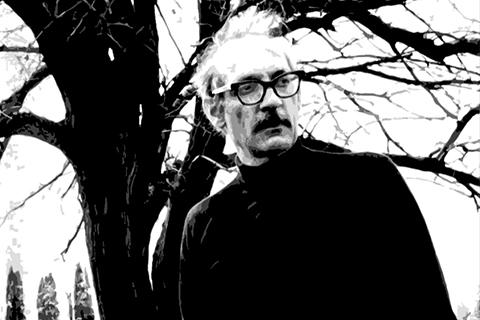
January 1st, 2020
Music Institute piano faculty Katherine Petersen and Marie Alatalo are among the performers in the upcoming George Crumb Festival.
Alatalo performs Sun and Shadow on Friday, January 31 as well as Makrokosmos I for solo piano.
On Saturday, February 1 Petersen, who is also a member of Fifth House Ensemble, performs Crumb’s Eine Kleine Mitternacht Musik and Vox Balaenae (Voice the Whale), the latter with Fifth House Ensemble musicians Melissa Ngan on flute and Herine Coetzee Koschak on cello.
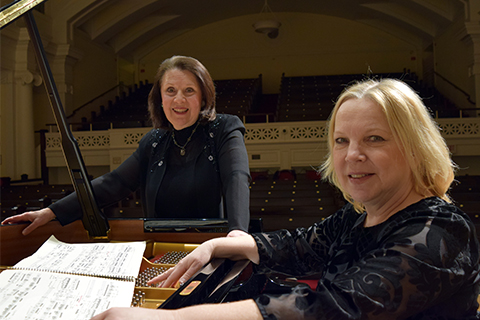
Marie Alatalo with Barbara Ann Martin at Nichols Concert Hall
Marie, when did you first encounter the music of George Crumb?
I first heard his music when I was in high school and Mr. Crumb visited the Interlochen Arts Academy. I remembered that experience for years. I first leaned and performed his music during Doctoral studies at the Eastman School of Music. I have continued to perform his pieces in different locations, including the Chautauqua Institution and on WFMT radio. I was fortunate to have coached on "Five Pieces for Piano" and "Eleven Echos for Autumn" during the first Crumb Festival at MIC in 2003. I haved also coached with Jeffrey Jacobs (performing on Sat) on the Makrokosmos, Volume I.
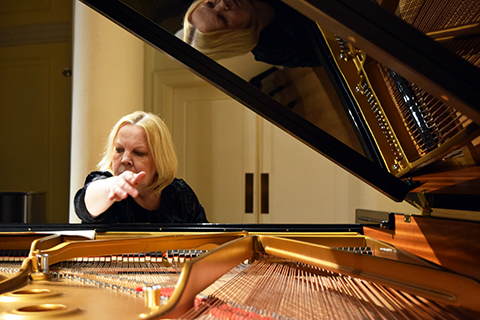
Can you tell us a little bit about the Makrokosmos series, in particular Makrokosmos I, which you are performing?
Makro I compomises twelve short pieces for amplified piano, one for each sign of the Zodiac (each dedicated to a person in Mr. Crumb's life) and organized into three parts of four pieces each. In addition to playing inside the piano, the performer is asked to hum, chant and moan and whistle.
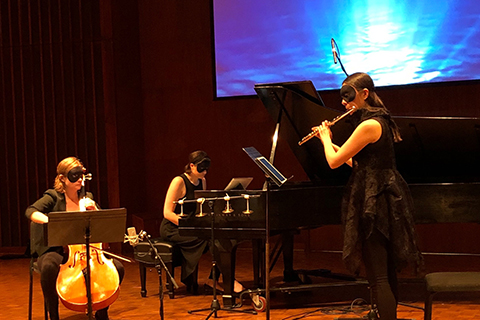 Fifth House Ensemble members in a recent performance of Vox Balaenae at Lawrence University
Fifth House Ensemble members in a recent performance of Vox Balaenae at Lawrence University
Katherine, can you tell us a little bit about Vox Balaenae?
Vox Balaenae is one of my favorite pieces to perform! Crumb wrote this piece having been inspired by recordings he heard of humpback whales singing in 1969. There are several moments in the piece that evoke the sounds of the whale singing and of seagulls over the ocean. Crumb is very specific that, for theatrical effect, the players should perform the workwearing face masks and under blue light. These effects aim to evoke a sense of nature (without human influence), and the masks effectively make the performers anonymous so the audience can experience the majestic scope of the music. The work begins at the dawn of time and follows the whale traversing through each of the time periods (Archeozoic, Proterozoic, Paleozoic, and Cenozoic) to arrive so beautifully serene at the end of time in the last movement.
What inspired you to choose Eine Kleine Mitternacht Musik as the solo piano work you are performing on this program?
Previously, I had only played Crumb’s ensemble works, which I enjoyed very much, so I was then inspired to look at his piano works when I was first approached about playing in the festival. At first, I was drawn to this work by its wonderfully whimsical title and went to the library to check it out. As with many of Crumb’s works, he is very specific about the sources of his inspiration, and this work is a musing on a song by Thelonious Monk titled “Round Midnight.” Having taken up swing dancing as a hobby recently, I’ve developed a strong connection to jazz music and love the opportunity to bring it into a contemporary classical light.
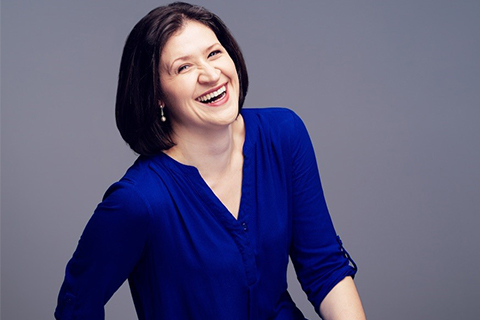
What do you enjoy about the music of George Crumb?
I enjoy how Crumb uses the piano in non-traditional ways. Some typical techniques he uses are plucking strings inside the instrument, strumming the strings, and creating harmonics much in the way a violinist would. Each piece also has very special techniques specific to the story of the work: in Vox Balaenae, I use a stone chisel to alter the pitch while plucking inside the piano. I think this is a very cool effect from an audience perspective. In Eine Kleine Mitternacht Musik, I use a percussionist’s mallet to strike the beams inside the piano, creating a ghost-like thumping noise.
How do you approach learning a new piece of music—perhaps especially a piece of music that requires prepared piano or unusual techniques?
With a lot of stickers, my metronome, and patience! Given all the special techniques inside the piano, I often need a lot of stickers to label specific strings and beams inside the instrument, especially when I’m first learning the work. As I get more comfortable with it, I often label fewer pitches. As with any piece of new music, the rhythm is a very important part of the process, and this is no different in Crumb’s music. He is very specific about what tempo to take, so I take my time getting comfortable with the rhythm and all the special effects at a slow tempo, before playing faster.
Read Howard Reich's Chicago Tribune Preview of the Festival >>
The George Crumb Festival concerts take place Friday, January 31 and Saturday, February 1, 2020 at Nichols Concert Hall, 1490 Chicago Avenue in Evanston and includes concerts, a special panel discussion with composer William Neiil and Barbara Ann Martin and an exhibition. Tickets are $25 in advance, $30 at the door; a Festival pass for both concerts is $40. Tickets & Complete Information >>
